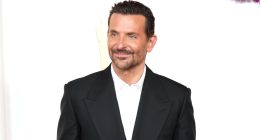
LAS VEGAS >> Schools paying athletes has been banned by the NCAA for decades, but a new proposal by the head of the largest college sports governing body in the United States is aimed at changing that.
NCAA President Charlie Baker earlier this week sent a letter to Division I members suggesting the creation of a new subdivision in which schools would be required to compensate at least half of their athletes yearly with at least $30,000 each in a trust fund.
“The proposal that I made yesterday, I would describe it as kind of an amalgamation of a bunch of different sort of thoughts, observations, and approaches to this,” Baker said today during at appearance at the Sports Business Journal’s Intercollegiate Athletics Forum. “And for me, this is a conversation we need to have. And I believe it’s a conversation that the folks in D-I at the NCAA want to have, and now we need to actually have it and get somewhere with it.”
Baker’s idea is an aggressive first step toward what could be a revolutionary change, but as with everything in college sports, there are many steps to come.
HOW WOULD IT WORK?
There are myriad details to work out, but the basic premise is to allow the schools with the largest athletic budgets — such as Ohio State, Alabama, Texas, Michigan and Georgia — to send more of their millions in revenue directly to athletes.
Why? Because as revenue from media rights deals have soared into the billions for the Power conferences, salaries for coaches and administrators have skyrocketed and there has been an arms race of investment in athletic facilities, it has become harder to make the case that athletes should not share more directly in the wealth.
Baker noted 59 schools spend over $100 million annually. Baker said schools would have to invest in their athletes in a way that is compliant with the Title IX, which protects equal opportunities in education based on gender. So not all the money could go to football players whose sport is the main revenue driver for almost all of the highest-resourced schools.
The money would fall under an educational benefit and the athletes would not be considered employees of their schools.
WHAT ABOUT THE REST OF THE 350 D-I SCHOOLS?
Baker’s proposal would allow schools to opt-in to the new subdivision. Schools that can’t afford to pay athletes would not be forced to and could remain in Division I.
The disparity in budgets, ranging from $5 million and $250 million annually, has made it difficult for the NCAA to find a one-size-fits-all model for Division I. Most of the issues reside at the very top.
The biggest and smallest schools could still compete against each other in March Madness basketball tournaments and other NCAA championships, but they would be governed differently.
WHY NOW?
The NCAA and college sports is under immense pressure legally, politically and in the court of public opinion to invest more in athletes, especially since a Supreme Court ruling in 2021 opened the door for all of the association’s governing authority to be challenged.
Dozens of state legislatures have passed laws regarding the way college athletes can be compensated for names, image and likeness, leaving the NCAA and its schools almost helpless to regulate how NIL is used in recruiting and retaining athletes.
The NCAA is moving toward implementing its own NIL rules in January.
Baker and other college sports leaders have been lobbying federal lawmakers for help with a national NIL law and some antitrust protection. But to get that, they have to show they are capable of modernizing college sports on their own.
HOW SOON COULD THIS HAPPEN?
Nothing moves quickly in the NCAA and college sports, but since Baker took over in March the association is seemingly been more nimble.
Still, Baker’s proposal isn’t even a formal one. Right now it’s just an idea. A strong suggestion that will need the buy-in of many stakeholders before it even goes through a legislative process that would include the Division I Council, the Division I Board of Directors and, likely, some sign off from the NCAA’s Board of Governors, the association’s highest-ranking body.
Even then, will it be enough for lawmakers to get behind? Because no matter what the NCAA does, it’ll still need federal help to fend off another round of lawsuits.
Read More: World News | Entertainment News | Celeb News
Star Ads








